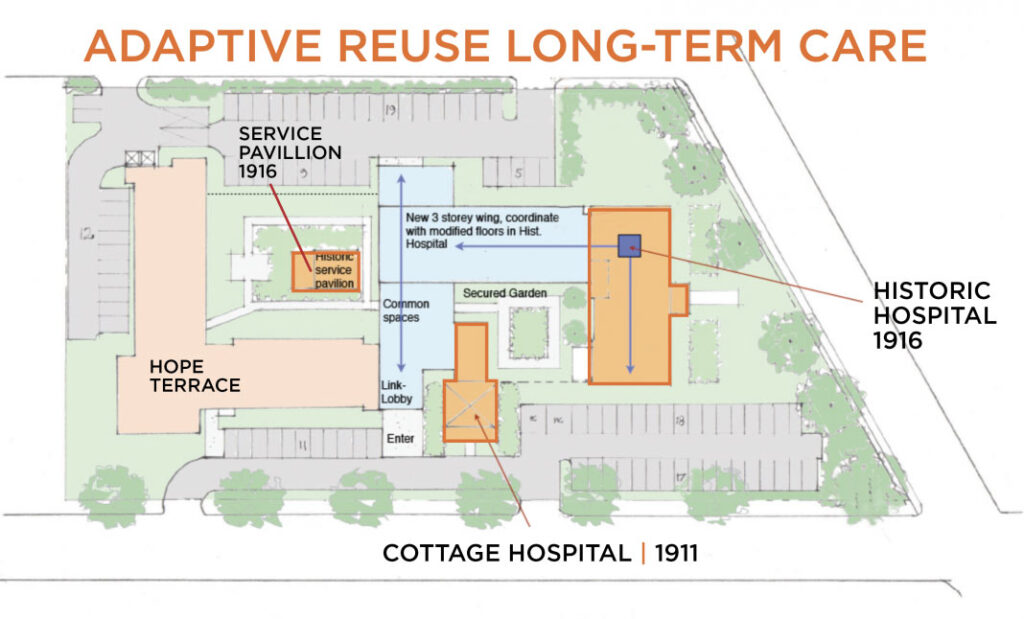
By Bruce Bowden
The protection of a community’s heritage is complex. Our heritage is a non-renewable resource and it is a basis for our understanding of our history and culture and becomes an important planning tool. Once these resources are gone, they are gone forever. Gone too will be our memory of past events, of history and of culture.
Port Hope’s Heritage is a Non-Renewable Resource
Identifying and protecting places in our communities that have cultural heritage value is an important part of planning for the future, and to helping to guide change while keeping the buildings, structures and landscapes that give each of our communities their unique identities. We can grow without destroying the things people love.
The designation of a property and/or landmark is the process by which places of cultural heritage value can be identified and protected. The designation of 65 Ward St. does not prevent additions or alterations on a property or reuse of heritage buildings for other purposes. The designation does create a conversation between the owner of heritage property and our Council guided by the Official and Strategic Plans. We can build a healthier option through adaptive reuse of the Historic Hospital buildings.
What Is Adaptive Reuse?
It’s inevitable that structures will age and outgrow their original functions. With changes in technology and lifestyle, construction and design are constantly updated to meet modern demands, and older structures are left in the wake of change. Those sensitive to history may prefer to restore older structures to their former glory; however, costs often make this plan unrealistic.

The demolition of existing heritage buildings is a waste of energy and material.
Adaptive re-use can substantially reduce costs of new construction and land acquisition and revitalize neighbourhoods adding value to unproductive properties.
The adaptive reuse of buildings can perform a significant role in making existing buildings sustainable. Adaptive re-use extends physical and social functions of a building to give it a new purpose while preserving its historic value. Hence, adaptation is a successful alternative for retaining the embodied cultural and social aspects of important buildings.
Past research indicates that there can be on average 10-12% cost savings from the adaptive re-use of a building as compared to the construction of a totally new building. Opportunities offered by adaptive reuse of buildings make it outweigh demolition/rebuilding because, given the availability of the required structural components, adaptive reuse of buildings is often cheaper and quicker having shorter contract periods and lower borrowing costs.
Building adaptation consumes a fewer number of materials, generates less waste and requires less energy compared to demolition and reconstruction. The re-use of built assets leads to the retention of the embodied energy of the original building making the latter environmentally sustainable.
Local examples of adaptive reuse include The Pines of Port Hope (former high school, now condominiums), The Beamish House (former family home now restaurant and pub).
Casey House (shown above) was originally an 1875 Victorian Mansion. Now through adaptive reuse, it is a state-of-the-art hospital. What’s remarkable is how comfortable and beautiful the place is: thoughtfully planned, carefully built; balancing privacy and public ambition; and with light, water and greenery at its centre. This is a place for life. The central question, the architect Siamak Hariri says, was: “How do we create the sense of something between a home and a hospital?”
Adaptive Reuse Projects do not start with a blank slate. They start with a heritage building originally built for a different purpose. Most hospitals in Canadian provinces are huge buildings on suburban sites, organizations amalgamated to produce operational efficiencies. This place is different. Quality architecture can help people feel strong and get strong. Patients and residents absolutely feel the difference in the details. Inside, the atmosphere of welcome is palpable – and people feel it, patients and residents deserve that feeling of welcome and comfort.
Heritage…
- Differentiates us
- Makes us unique
- Gives us a competitive advantage
- Makes us worth visiting
- Makes us worth investing in
- Is an economic driver
- Makes us feel better
- Gives us a community worth caring about
- Enhances our distinctiveness
- Has psychological and social benefits
- Preserves our memory
